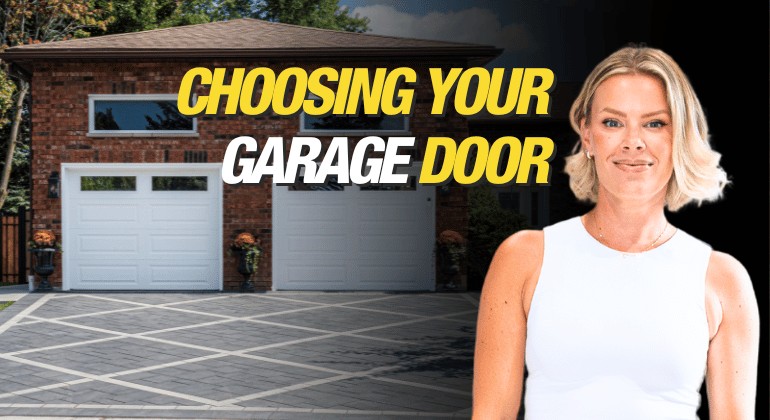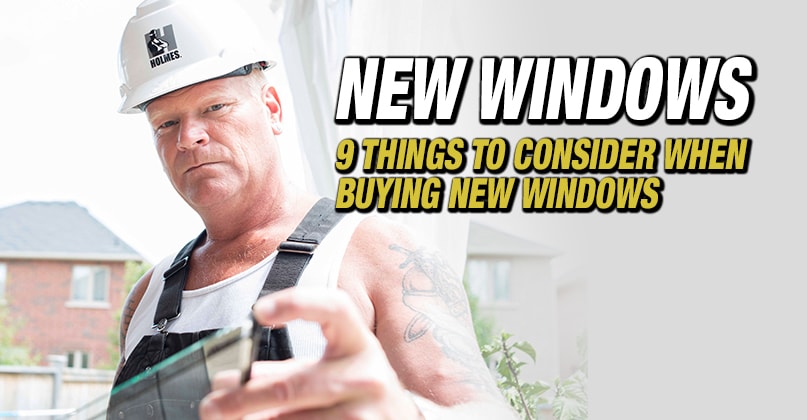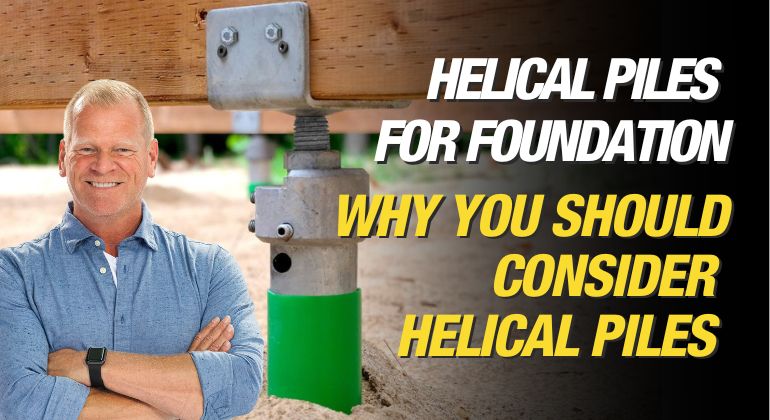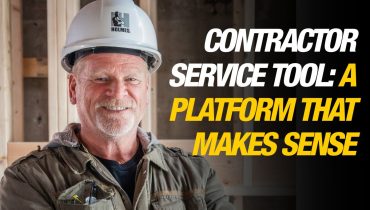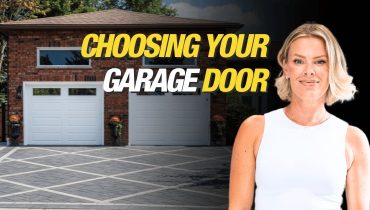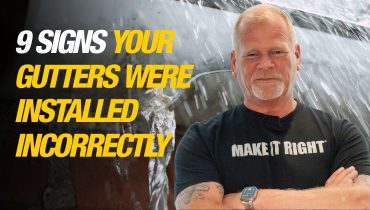If you’ve watched me over the years, you know I’m big on one thing: doing it right. That doesn’t just apply to how you build or renovate a home...

Everything You Need to Know Before Installing a Pool or Hot Tub
By Mike Holmes
Mike’s Advice / Electrical
Thursday, May 4th, 2023 @ 2:08pm
What You Need to Know about Pool and Hot Tub Installation
It’s spring time and that means hot, warm summers are just around the corner. Now is the perfect time to start thinking about your outdoor space and consider all the things you need if you’ve been contemplating installing a pool or hot tub to “up” your backyard fun this summer. A recent study said that 60% of Canadians are planning a reno in the next two years and most of those renos will be happening in the backyard.
There are many vital factors to consider when installing a pool or hot tub, including electrical supply, how much space you need, how much privacy you need, safety considerations as well as the ground that the pool or hot tub will be installed.

Hot tub from Leisure Pools installed on Holmes Family Rescue Season 1.
Here’s a guide on everything you need to know before getting a pool and/or hot tub installed.
Planning and Preparation for Pool and Hot Tub Installation
Before starting any new reno project it’s important to have a plan and that starts with doing your research. You need to make sure your backyard is prepped for and can safely house a pool or hot tub.
Choosing The Right Location For Your Hot Tub
When installing a hot tub in your backyard, you need to ensure the ground is flat and compact. Ideally, that location would also be near a garden hose and an electrical outlet.
Today’s hot tubs are energy efficient and come in a range of sizes that are great for both small and big yards. They’re also typically easy to install as long as you have a solid level surface to put it. This is typically paver stones or a small concrete pad.
Hot tub installation becomes a bit more complicated if you plan on having the hot tub on a deck or elevated patio, including a rooftop deck. You will need to confirm that the structures can support the weight load, which takes into account the size of the hot tub with the maximum number of people and water that can fit into it.

Confirm that the structure you’re building the hot tub on can support the weight load, which takes into account the size of the hot tub with the maximum number of people and water that can fit into it.
Preparing The Site For A Pool Install
Similarly, an above-ground pool requires a flat, compact, level surface. Rotting grass can harm the pool liner, plus grass is unstable because it might settle or change over time, so any sod needs to be removed. Once it’s been removed, sand is suggested as a foundation. However, it’s crucial to use foundry sand, which binds together more tightly when moisture is added.
An in-ground pool takes more than just digging a hole. For starters, before beginning any work you must pay fees to the city or municipality and submit all the necessary paperwork. Several permissions and permits must be applied during the procedure, which differs depending on the city or municipality. While the pool itself does not require a permit, the pool enclosure does.
Obtaining necessary permits and approvals
You could require a permit to install a hot tub at your house, depending on its location, size and local by-laws.
You’ll also need an enclosure permit is necessary for any swimming pool that can contain 36 inches or more of water. In-ground, above-ground, and portable pools are all included. You can use your hot tub without an enclosure permit if it has a lockable cover.
For an in-ground pool, you may also need:
- Site Survey of Your Property
- Pre-Review: Check your survey results to see if your project needs conservation authority or heritage approval. This includes property located on or near conservation grounds or in a green belt zone
- TRCA Approval: If your property is subject to The Toronto Regional Conservation Authority you must submit an application. The TRCA oversees areas utilized for purposes such as drinking water source protection, leisure, education, and flood management. If any portion of the construction site is located within such an area, you must first get TRCA’s consent.
- Public Works Permit: slope or lot grading must be reviewed. The swimming pool site plan must display the lot grades, elevations, drainage, and any modifications that are being considered.
- Road Occupancy Permit: You must apply for a Road Occupation Permit if you want to park construction tools, machinery, or supplies on a street, sidewalk, or city-owned property while work is being done.
Once you have received the necessary permits for your survey or site design, you can submit your application for a pool fence enclosure permit.
Cost of Pool and Hot Tub Installation – Establishing a Budget
Pool Installation Cost
An above-ground pool normally costs between $1,700 and $5,970 to buy and build, with a $2,700 average price. Installing a sizable above-ground pool with high-end materials and extras may run as much as $13,400.
A typical cost for an inground pool and equipment is between $40,000 and $60,000, but this depends on a variety of factors. The total cost will depend on the size, form, and any special elements like steps and benches. There are also semi-inground pools which tend to be more affordable, with prices ranging between $16,000.00 to $22,000.00.
Swim Spas are a combination of a small swimming pool and hot tub and with prices range from $10,000.00 to $30,000 for a fully personalized pool spa, but average between $20,000.00 and $25,000.00.
Hot Tub Installation Costs
New hot tubs typically cost between $5,000 and $8,000 on average. Entry-level hot tubs can cost as little as $3,000, while the most expensive flagship versions can cost more than $16,000.
Hidden Cost of Pool Installation
It’s important to understand all the line items that will be required for a successful pool installation. However, there are some things that you might not realize should be included or considered, such as:
Retaining Walls
Retaining walls can become rather pricey. They are crucial for maintaining the stability of your decking and pool as well as for making sure your garden drains properly.
RELATED:
Pool Patio Extension
When designing your pool consider the area surrounding your pool. This may not be included in your pool estimate – just make sure it does! The average patio space is between 600 and 900 sq. ft.
Make sure that the majority of this space is dedicated to congregating (that includes tables and chairs, basically a socializing area). The balance of this space needs to be functional and look good.
If you can’t do everything at once, just keep this in mind as you do your backyard in phases.
Dirt Hauling
When the hole for your pool is excavated – make sure all that dirt collected is also taken away and is included in your estimate. Granted, some of the earth may be able to be spread throughout your property – but remember there will be a lot of earth!
Landscaping
The area around your pool will likely get damaged due to the equipment required to install the pool and will need to be repaired by reseeding your lawn or adding sod to your lawn. Also, keep in mind that your driveway may get damaged – talk to your contractor and discuss what the plan will be should this occur.

Landscaping Design from Holmes Family Rescue
Electrical
You know you need it – just make sure that it is included in your pool installation estimate.
Also, power requirements will be based on all the features, like pumps, salt chlorine generators, lights, automatic covers, heat pumps and hot tubs. The more features you have, the more power and electrical hook-ups you’ll require and the higher the cost.
Fencing
Fencing requires a permit and therefore it needs to be considered. It’s important to make sure the type, size and installation of the fence are included in your estimate.
Note: In Ontario, pool fence enclosures need to be a minimum height of 5’ (or 1.5 M) measured from grade on the outside of the enclosure.
RELATED:
Choosing the Right Pool
Here are the most popular types of pools available:
Vinyl Liner Pools
Installation costs for pools with vinyl liners are typically lower, which means less money must be spent upfront. They also typically allow for a bit more customization, which is a plus. However, in the long term, the expense of maintenance will probably outweigh the money you saved instead of installing a fibreglass pool.
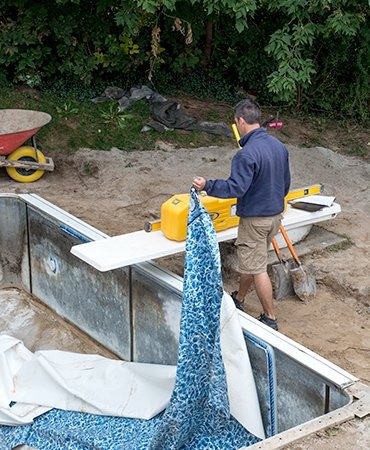
Swimming pool Construction. Pool Liner Installation
Fibreglass Pool
Fibreglass pools are great. They often last longer, require less general upkeep, and cost less. They’re also fairly easy and quick to install. If you have a certain vision for your pool setup, you may need to think about other options because you can be constrained by the shapes and sizes of the pools available.

Fiberglass pool installed on Holmes Family Rescue, Season 2
Despite this, fiberglass pools still come in a variety of designs, so the chances are excellent that you’ll find one that meets your requirements if you do your research.
Concrete (gunite)
Concrete pools are durable and provide a lot of customization options. If you have a vision for your pool that a fiberglass or vinyl pool can’t fulfill, you can bet it can be accomplished with a concrete model. Among the three options, concrete pools are typically the most expensive, so this comes at a price. They also demand the most upkeep. So, you must determine whether the trade-off is worthwhile.
For a great overview of Pools check out Swimming Pools 101
What Are The Different Types of Hot Tubs
Inflatable Hot Tubs
Inflatable hot tubs are a more economical and portable alternative to more permanent models. They are inflatable and made from durable, UV-resistant materials such as latex or vinyl. They also come with a special pump that blows up the tub and provides the jet power needed.
Inflatable hot tubs are affordable on heating costs and chemicals and cost-effective to purchase versus any permanent hot tub option.
Most plug n’ play hot tubs, operates on normal 110/120 Volt 15-Amp circuit and can be connected to the majority of common household power sources without the need for additional wiring. Also, the GFCI is typically built into the cord.
Portable Hot Tubs
Portable hot tubs come in a wide range of sizes and are made of various materials. Most are incredibly strong and power-efficient. Portable hot tubs can be installed on paver stones or a concrete pad or can be incorporated into a deck.

Installing a hot tub from Leisure Pools on Holmes Family Rescue, Season 1
Generally, portable hot tubs cost between $4,000 and $8,500, while more expensive additions may result in a higher price.
Related
Built-In Hot Tubs
Full-sized hot tubs are typically required to be hard-wired with a GFCI-protected 230 volts, 40 or 50-amp circuit. Some of the larger hot tubs with multiple pumps require a 60-amp GFCI breaker.

Backyard renovation with built-in hot tub by Saldan Construction Group, Holmes Approved Homes builder.
Remember, all electrical work should always be done by a Licensed Electrical Contracting (LEC) business. Contact your local electrical authority or board to find an licensed electrical contractor in your area and any updates on permits or electrical code changes.
Built-in hot tubs are more permanent and come in a variety of shapes and sizes. You’ll also frequently find them connected to or included with an inground pool. Because built-in hot tubs are built into the ground, they can be incorporated into a garden or landscape design similar to an inground pool.
Considerations When Choosing A Pool Or Hot Tub
Your pool design and plan can be as simple as the basics or as high-end as your budget will allow. Extra features can include waterfalls, water slides, a diving board and additional lighting.
Electrical Safety When Choosing & Installing A Pool or Hot Tub
When buying a pool or hot tub it’s important to check that it’s from a reliable seller and that it’s safe and in good condition. There was a shortage of supplies recently, especially during the pandemic, and many people were purchasing online, sometimes from unreliable sources. While supply chains are getting better, there’s a lot of scamming going so be diligent about your research.
WARNING:
Watch out for refurbished hot tubs – and make sure they are approved and have certification marks, and ask about modifications because these could void any warranty on the product. It’s a simple question that can help you stay safe.
Certification Marks
Always look for the certification label approved for Canada. If you are purchasing used equipment, ask if it has been modified using approved parts and if warranties are still valid.

Common certification marks in Canada to look out for when buying a pool or hot tub.
Your LEC will be able to confirm that your equipment is certified for use in Canada, by an accredited certified agency by the Standards Council of Canada.
Pool and Hot Tub Installation Process
Depending on the scope, most pool installations are between 8 and 12 weeks on average.
Concrete Pool Installation Timeline
Concrete pools require a bit of initial setup work so the timeline for installation might be a little longer. Here’s what a concrete pool installation includes:
- Selection and Design Layout
- Permits
- Excavation
- Construction of base
- Steel reinforcement of floor and walls
- Pump and Filtration system installation
- Concrete formation
- Waterproofing
Fibreglass Pools Installation Timeline
Fibreglass pools don’t take as long as the pool is pre-formed and typically can take 4 to 6 weeks on average.
The installation includes:
- Selection and Design Layout
- Permits
- Excavation
- Setting the Floor – bed of gravel
- Pool delivery and placement
- Plumbing and backfilling
- Reinforcement and Bond Beam
- Coping and deck
Pool And Hot Tub Clearance & Excavation Area
It’s essential to ensure clear access when getting your pool or hot tub delivered. This includes clearance issues, such as hydro-meters, basement window wells and gates that may be too small.
An above-ground hot tub is relatively easy as long as the ground is compact and level. A hot tub will be very heavy when filled with water so it’s important to ensure the area needs is structurally sound to support the weight of the hot tub, water, and occupants —whether it’s going on a deck, patio stones or concrete slab. The ground must be stable and compact.
Tip: Uneven pads, decks or soft surfaces can cause damage or even crack the hot tub shell and void your warranty.
An inground pool can be more complicated to excavate, especially if your contractor runs into large rocks or water which can cause some issues and additional costs. However, soil tests provide a good indication of what to expect.
A dewatering system may also be required for vinyl pool installation. This is less of a concern, however, when it comes to fiberglass pools because the pool is installed and full of water in a matter of hours after excavation.
Fill the Pool & Plumbing
A hot tub is a completely self-contained vessel offering hydrotherapy benefits. Some people believe that hot tubs need plumbing, however, this is untrue. After installation, a garden hose is used to fill your spa, unless it is incorporated into an inground pool system.
For inground pools, the plumbing pipes are buried underground and connected to the pool and filter equipment. The skimmer and main drain suction lines are two pipes that attach to the pool pump through a 3-way valve. The pipe connecting the wall return inlets to the pool filter is known as the return line. Step jets, a pool cleaner line, fountains, and water features might all be linked to additional plumbing lines.
After the construction of the pool’s walls, or around halfway through, pool plumbing is completed, and this should be done by your pool installer.
An additional construction permit is needed for the plumbing work where the pool’s water supply will be directly connected to the regional water supply or where the pool will be connected to existing drains.
Electrical Considerations When Installing A Pool Or Hot Tub
Pools with Conductive Vs. Non-Conductive Pool Shells
Concrete-poured, pneumatically applied, concrete-brick, and metal-framed pool shells are all regarded as conductive materials. On the other hand, pools with fibreglass and vinyl linings are said to be made of non-conductive materials.
What does bonding mean when it’s related to electrical?
The technique of bonding involves connecting the electrical and metallic parts of the pool with a wire to create a non-resistive channel between them. Bonding’s main objective is to connect, contain, and stop any harmful electrical power from reaching pool equipment, humans, and animals.
Proper and well-maintained bonding will greatly reduce the amount and severity of any voltage issues.
Pool Lighting
Lighting is typically added when a pool is installed, and this should be done in coordination with your pool professional and LEC.
The three main pool lighting options are incandescent, LED, and fiber optic lighting. Hardwiring inside a niche is necessary to install traditional full-mounted lights placed during pool construction. Fiber-optic systems are the most expensive and challenging to install, which are frequently used in higher-end pools to produce twinkling patterns, unusual forms, and other lighting effects.
Heating A Pool
The vast majority of pool heaters are gas-powered and run on propane or natural gas. The water enters the heater after passing through a filter as the pump circulates the pool’s water. The gas burns inside the heater, heating the water and transferring that heat back to the pool.
There are also electric pool heaters, which produce heat by passing an electric current through their heating element. Heat is diffused as water flows over the heating element, warming the water while simultaneously cooling the resistor.
Panel Load
The electrical breakers for equipment like the filter pump, air blower, underwater lighting, electrical outlet (GFCI), time clocks, electronic heaters, automatic covers, control systems, etc. are housed in a sub-panel at the equipment pad of the majority of modern swimming pools.
A subpanel is a smaller service panel that distributes power to a specific area of the home (in this case, the pool equipment). It is a satellite circuit breaker panel that has its own breakers —the main panel inside the home, which supplies power to this sub-panel, is connected to it.
There are many electrical elements to keeping your pool clean and safe. Work with your pool specialist or LEC to ensure everything is installed correctly.
Items included in the subpanel:
- Pool Pumps or Circulation Pump with either 110V or 220V have a dedicated breaker
- Pool Heat Pumps require a dedicated breaker of 30-50 amps
- Underwater Lighting: usually 110 Volt, goes back to the sub-panel
- Automatic Cover: dedicated circuit 115 V or 230V depending on the manufacturer
- Pool Skimmer: 110 V, with a dedicated breaker
- Landscape Lighting: 110V, converts down to LED drivers
Above-ground pumps are often 115V only, wired with a power cord, and/or plugged into a GFCI outlet.
RELATED:
Electrical Code Requirements
Electrical code safety requirements are the same for pools as they are for hot tubs:
- All electrical must be 3 M away or cut off by a permanent barrier, wall or fence
- All 120-volt 15- and 20-amp receptacles in your backyard must be protected by a Class A Ground Fault Circuit Interrupter (GFCI)
Outdoor Lighting
When lighting your pool and garden, consider using a layered approach; adding pathway lighting helps prevent trips and falls and may also enhance your overall experience. Low-voltage lighting fixtures look beautiful and use very little energy. To help prevent shock and short circuits, they require an isolating transformer.

Make sure your outdoor lighting is actually suitable for outdoor use.
All extra illumination, including patio lanterns, hanging lights, and string lights, must be Class A GFCI protected. GFCI outlets are designed to prevent shock and are recognizable by their tester buttons. If the outlet is exposed to elements like rain or snow, it needs to have a cover plate marked “Extra Duty.” These rules are there for your safety and it’s best to leave it to a professional to ensure the installation is done to Code.
RELATED:
Hiring A LEC
It is a good idea to inspect your electrical system when installing a pool. Every electrical source that powers your pool equipment or is within 1.5 meters of any metal items, such as a pool ladder, must be properly grounded and bonded, by your Licensed Electrician. Otherwise, even touching the metal pool ladder’s bars might be fatal!
Hire an electrical contractor to check the specs of your pool; your pool may involve upgrades to your electrical system.
Looking For A Licensed Electrical Contractor In Your Area?
Check out your local electrical board or union to find a certified electrical contractor in your area.
Not to mention, if you want to run electricity across your property your LEC will have to dig a trench for this. To determine whether it is safe for you to dig, it’s important to contact your local utility company first. The trench size will depend on whether the wire must cross a driveway or be isolated to the yard.
READ MORE:
What About Electrical Maintenance?
Is extremely important for the longevity and safety of your pool or hot tub to maintain your electrical. It’s best to have your electrical inspected by a LEC or pool contractor in the spring when the pool is being prepped for the warmer months.
The inspection is to ensure the electrical is in good condition and hasn’t been damaged. This is particularly important in saltwater pools where corrosion can occur around the ladders, and slides to make sure everything is bonded together.
Common Hazards When It Comes to Pool + Hot Tub Installations
The most common hazards are caused when a pool, hot tub, or surrounding structures such as a gazebo are installed too close to overhead powerlines and communication lines. This is a risk for the user because we all know that water and electricity don’t mix. Many older neighborhoods still have some power lines that run through homeowners back yards.
In most municipalities and provinces it’s essential and law that any electrical or overhead wires must be 5 M from the edge of the pool or any elevated surface associated with the pool. This includes decks, slides, pool skimmers, gazebos, and more. The clearance needs to be 7.5 M when the lines are over 750 volts.
However, in other areas, Local hydro utilities will not permit a pool or hot tub underneath overhead powerlines —even if the clearance has been met. That’s why it’s always important to contact your local utility company before you get started.
Pool and Hot Tub Maintenance and Care
Test the water in your pool and hot tub frequently, and only treat it when necessary. Over-treating the water in your swimming pool can have a negative effect.
The main cause of cloudy water is improper water chemistry management. Low chlorine levels are often the main culprit. When you’re careful, testing and maintaining the water in your pool should just take a few minutes. In contrast, restoring equilibrium to your water is time-consuming and an unnecessary expense.
Daily Maintenance Tasks
Daily pool maintenance tasks should include checking: the water levels, the filter to make sure it’s not clogged, the pump, and inspecting the pool cleaner.
If you have a suction or robotic cleaner, you don’t need to run it every day. The only exception would be if you already have a circulation issue with your pool. To avoid unnecessary wear and tear, the robotic or suction cleaner should be used roughly two to three times every week.
For hot tubs, it’s important to ensure friends and family rinse off lotions, etc. with soap before entering the hot tub will help keep your hot tub cleaner, for longer. Also, close the lid when it’s not in use to prevent pollen, leaves, twigs, and other contaminants from getting in.
Weekly and Monthly Maintenance
Weekly pool maintenance includes: skimming leaves and debris, brushing the pool walls, vacuuming the pool, cleaning the skimmer, checking the pump, filtering and backwashing as needed. It’s also important to clean the filters regularly and add anti-foaming dissolver.
If you have a hot tub it’s important to inspect the hot tub and cover for damage. Don’t forget to test the pH and chemical levels as needed. It is also suggested to drain and scrub walls with a bleach solution on a monthly basis, especially during heavily used times.
Seasonal Maintenance Tasks
Most people use their hot tubs all year long, but in Canada at least, most outdoor swimming pools close for the winter. It can be depressing to close your pool for the winter because it means the fun of summer is over. Yet the work must be done, therefore do it correctly.
In order to close the pool, it must be clean and debris-free. This includes having the water tested and a phosphate remover added and the water shocked and chlorinated. You’ll also need to lower the water levels (unless you have a fiberglass pool). You should also get your filter and pump cleaned and backwashed, clear the pump lines and take all of its accessories off. Having a cover installed will also help keep the pool protected for the following season.
If you have a fiberglass pool you don’t need to lower the water levels. You can leave your water in during the winter & use it as an ice skating rink.
During the off-season, it is best to check the chemical composition periodically and add chemicals as necessary to maintain desired levels.
Warranty
Although some builders have agreements with their equipment vendors that extend their coverage to three years, the industry standard guarantee on the majority of pool components is one year.
The majority of reputable hot tub producers provide thorough parts and labor warranties. Industry-wide, there are some standard exclusions that relate to failure from subpar water chemistry or wear-and-tear items. The shell warranties range from a year to a lifetime. With regard to the 1/8″ thick layer of cast acrylic, which is primarily cosmetic and not structural, surface guarantees range from 3 to 7 years.
Heating elements, motors, control boxes, circuit boards, and topside controls are all covered by equipment warranties that last between one and seven years. Plumbing warranties also insure you against leaks and other associated problems and run from 1 to 7 years.
Do Swimming Pools Add Value to Your Home
According to the Canadian Real Estate Magazine, while properly maintained in-ground pools can increase your home’s resale value, above-ground pools frequently don’t. There are some significant differences between these two sorts of pools. Inground pools are more expensive and frequently require more maintenance, but they provide the most value for your money.

Swimming Pool installed on Holmes on Homes: Building a Legacy
A well-built, high-quality hot tub is well worth it. They provide a range of benefits and are relatively easy to maintain. Also, if properly maintained, they have a long lifespan. Get a high-quality tub if you want to make a wise investment, and if not permanent it can easily be dismantled and taken to your next home!
RELATED:
Installing a pool or a hot tub or a combination can add the “wow factor” to the backyard you’ve been dreaming about, providing you and your family with years of enjoyment. Taking the time to plan accordingly and invest in a quality product and incorporating all the necessary safety requirements your installation has a much better chance of going smoothly so you can start enjoying the new pool with friends and family.
READ NEXT:
Spring Yard Maintenance Tips For Your Outdoor Space

